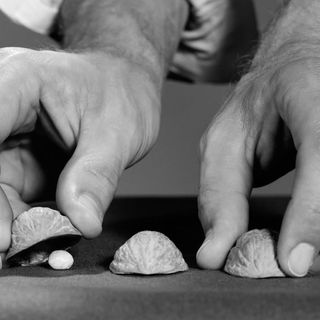To all those who consider themselves masters at identifying lies, prepare for some ego-altering news: just because someone looks away while relaying a story, for example, doesn’t automatically mean they’re lying — they could just be trying to access a memory.
A Baycrest hospital study from Canada has found people tend to move their eyes away to remember past details of a fact they were told, or an image they witnessed — often looking in the same direction as they were when they first came across the information. “Our findings indicate that eye movements play a functional role in memory retrieval,” Jennifer Ryan, M.D., senior scientist at Baycrest’s Rotman Research Institute, said in a statement. “They can tell us a lot about someone’s memory.”
But, conventional wisdom has always told us otherwise — that rapid eye movements make a person look shifty; excessive blinking makes them look nervous; a refusal to make eye contact relays they’re afraid. The cementing of these notions have wisened us up to liars — if they’re not making constant, assured eye contact, something’s up. Unfortunately, research doesn’t back this up.
U.K. researchers attempted to understand the connection between eye contact and lying, involving participants in several experiments that required them to lie while their eye movements were tracked. The study, published in the journal PLoS One, found where a person looks has no connection to if they’re lying, and there’s also no way a watcher can detect lies by observing where the other person looks. The study especially debunked a popular theory called neuro-linguistic programming (NLP) that involves people’s communication skills and body language. NLP suggests when right-handed people are looking to their right, they’re imagining an event, whereas if they’re looking to their left, they’re remembering an event — essentially, liars look to the right when lying. Researchers have since found this to be false.
Related on The Swaddle:
When You Lie, You’re Likely to Think Others Are Lying Too
The contribution of the eyes in remembering past events has been well-documented by previous Baycrest research as well. “People’s eyes move in a certain pattern when observing what’s in front of them. When people try to hold that information in mind, they unwittingly move their eyes in the same pattern over and over again, even when looking at a blank screen,” according to the study published in the Journal of Experimental Psychology: Human Perception and Performance. This tendency intensifies the older a person gets, Baycrest researchers found.
What’s more, people who get away with lying are tapped into this misconception society harbors about them — i.e. no eye contact equals lying — and tend to seek more eye contact with their conversation partners in order to fool them, a study published in the journal Psychiatry, Psychology and Law found.
However, there does exist a teensy-tiny connection between eye contact and lying — the more eye contact a person makes, the less likely the other person would be to lie, according to a study The Swaddle previously reported. Meaning, there is no need to wait to catch a liar based on their eye movement, but simply maintain eye contact to deter them from even trying to lie.
So, how does one catch liars, if not on the basis of eye contact? Look at “bodily movements, facial expressions, tone of voice, and content of speech,” Lillian Glass, M.D., author of The Body Language of Liars, tells TIME. It’s more likely a person is lying if they’re gesturing with both of their hands after they’ve uttered a statement, rather than during, TIME reports. “Rocking the body back and forth, cocking the head to the side or shuffling the feet can also be signs of deception,” Glass adds. Rolling one’s lips all the way back, or pursing them, are other signs of lying, TIME reports; a change in complexion and sweating are more cues.
The abovementioned signals, however, are not foolproof — catching someone in a lie, especially deduced from bodily cues, is as much an exercise in understanding the other person’s habits as it is in evaluating one’s own biases.




